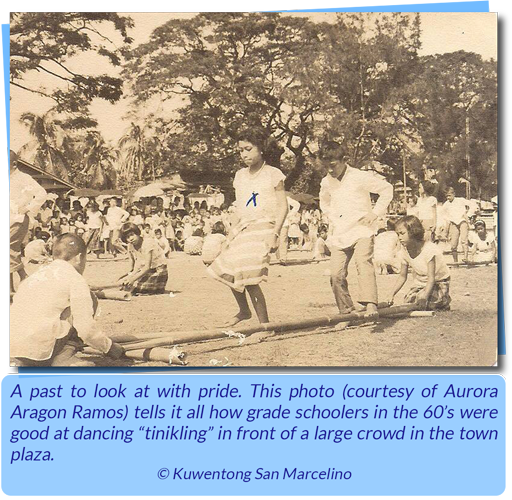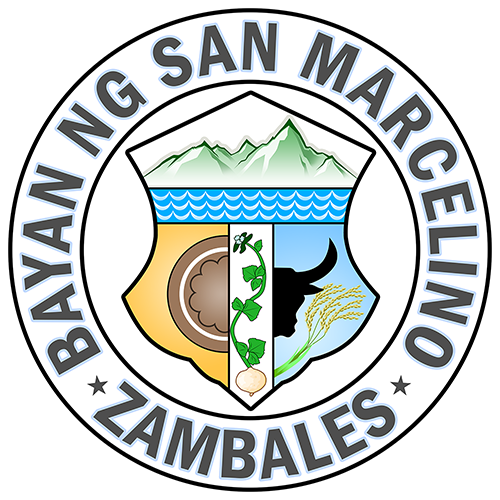Profile
- Land Area:
- 44,092 hectares
- Population:
- 37,719 as of 2020 PSA Census
- Households:
- 9,773 as of 2022 PSA Census
- Classification:
- 1 st class Municipality
- Total Income:
- 329,888,
- No. of Businesses:
- NA
Brief History
The first trace of civilization in this town sprouted on the peak of the jungle, feed-abundant, cute little VEGA HILL, brought forth by our sea-faring industrious, and die hard fore-fathers from Ilocos Regions, among whom were the old Corpuses, Udans, Ragadios, Raguinis, Rabanes and Fabunans. With courage, they tamed what seemed tameless: with industry and perseverance they turned untouched lands and resources of the hill. And all these combined, made Viga Hill a wonderful place to live in. But Viga Hill is only a part of the approximately 440.92 square kilometers that comprise San Marcelino.

San Marcelino is bounded on the North, by San Narciso, San Felipe and Botolan towns; on the East, by Porac, Pampanga; on the south by Castillejos; and on the West, by San Antonio and San Narciso. Because our forefathers hated the monotony of status quo, they found themselves not long thereafter in another place called MANGARING, now known as Barrio LINASIN, in answer to their strong urge to seek for a greener pasture, until by the same urge, they found themselves permanently settled, this time in the poblacion or in what now known as the town proper and which in itself was filled with trees, shrubs, cogons and wild animals. Solidarity among the early settlers was evident in their group hunting. Fairness in their division of whatever they have hunted and obedience of the authority of their elder in matters of domestic, social and other concerns of life where there was an inter-play of authority and governance.

It was in this place and under this state of life when FATHER GUILLERMO, a middle-aged but kind hearted Spanish priest, in the company of a handful of Spaniards, reached and befriended our forefathers. For the first time, the more improved concept of urbanity and Christianity provoked their minds, and after a time, actually lived and handed by them from one generation to another. But time has to go and bring them more mouths to feed, more life and people, especially the friars to reckon with. And so, by sheer necessity and under the guidance and supervision of the friars, now in great control, the concept of “government’ was born in their midst. So a government set-up was conceived whereby the friars appointed as local or district heads, the cabesas de barangay for every barangay, among others being Consuelo Norte, Nagbunga and Sinnerrekan (now known as Linusungan), but which later on, in a much increased number, viz: San Rafael, Sta. Fe, Buhawen, Consuelo Sur, Rizal, San Guillermo, San Isidro, La Paz, Nagbunga and Central, that houses the elected Teniente del Barrio, also known as Capitan or Presidente with the middle-aged and courageous MARCELINO coming out as our First Teiniente del Barrio, followed in succession, among others by Domingo Magsaysay and Antonio Rolls.

This government set-up went on for quite a time to the dissatisfaction of our forefathers who felt being in office only as nominal leader deprived of their open judgment and discretion, as they were being controlled and merely dictated by the friars on the more vital aspect of governance. The discontentment which added to the many other shocking abuses of the friars, forced our ever-yielding forebears into joining cause with the nationwide insurrection movement. Among those of our forefathers who led the movement in our town were Jorge Udan, Francisco Corpus, with Alipio Corpus in their front. While the reforms demanded by these insurrections were not totally granted, they had, however the resulting effect of giving our forefathers a much great hold and participation in governing their respective districts.

And so, on a thrilling and most eagerly-awaited day of January 14, 1906, the aspiration of our forebears to be politically free has dawned at long last amidst an uproarious day for they were already given the right to actually elect their leaders under an air of present day concept of democratic process, with MATIAS APOSTOL as the first duly elected President, now an office with power, and a political set-up so different from that held by his immediate predecessors in office, among them were Carlos Corpus, Alipio Corpus and Juan Rodriguez. This was how the town of San Marcelino evolved politically.
But why SAN MARCELINO? San Marcelino was named after MARCELINO our first Teniente del Barrio. After having been Christianized and christened by Father Guillermo the people rightfully chose GUILLERMO as the town’s Patron Saint.
Geography
Geographic Location
San Marcelino is one of the thirteen (13) municipalities of Zambales, occupies the southern part of the province. It is bounded on the north by the municipality of Botolan, on the east by province of Pampanga, on the southeast by the municipality of Castillejos, on the southwest by the municipality of Subic and on the west by the municipalities of San Antonio, San Narciso and San Felipe.
The Municipality is approximately 154 kilometers northwest of manila. 56 kilometers from Iba and about 27 kilometers north of Olongapo City. It can be reached by about 31/2 hours travel by car from Manila, one (1) hour from Iba and 30 minutes from Olongapo city.
Land Area
San Marcelino has a total land area of 44,092 square kilometers or 44.092 has. making it the second largest municipality in Zambales, next only to Botolan. It accounted for 11.9% of the provincial land area of 371,400 hectares.
Administrative Subdivision
The Municipality of San Marcelino is composed of eighteen (18) barangays namely: Aglao, Buhawen, Burgos,Central, Consuelo Norte, Consuelo Sur, La Paz, Laoag, Linasin, Linusungan, Lucero, Nagbunga, Rabanes, Rizal, San Guillermo, San Isidro, San Rafael and Sta. Fe. The municipal center or the Poblacion is situated approximately 20 kms from all other barangays.
Topography
The topography of San Marcelino ranges from flat and level and to mountainous and rugged terrain. The southern and western parts of the municipality are generally flat while the eastern part covering the barangays of Sta. Fe, Aglao and Buhawen.are generally rolling and mountainous.
San Marcelino is one of two inland municipalities of Zambales. The Sto. Tomas river separates the entire flat area of San Marcelino from the mountainous part on the eastern side and the flat lands located on the western side. Several creeks and rivulets converge into this river.
The Mt. Pinatubo eruption in 1991 and subsequent lahar mudflows from 1991-1993 altered a number of low-lying barangays due to lahar deposition which hardened during summertime inundating previously low areas.
The terrain and contour of the land in San Marcelino is described as follows.
43% - flat in its southern and western portion
13% - upland and rolling land in the eastern and
North eastern part
44% - comprise the forest and mountainous area
Climate
San Marcelino has two distincly pronounced seasons; the dry and the wet seasons. The wet season falls between the months of June to October with a monthly average rainfall of 17.5 inches. During this season, temperature varies from 26 to 28 degrees Celsius. The dry season is marked by an almost total absence of rain. Minimum temperature within these months is placed at 30 C while maximum temperature reaches 35 C.
Rainfall and Wind Pattern
The average annual rainfall is 3,150.2 millimeters. The municipality experienced the least precipitation of not more than 2,000 mm in 1987 and 1992 with 1,867.2 mm and 1,900.3 mm respectively.

